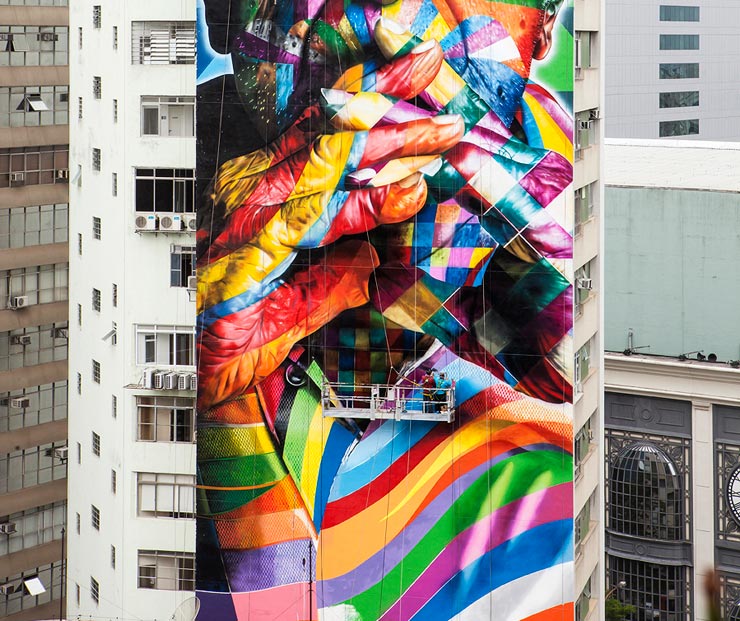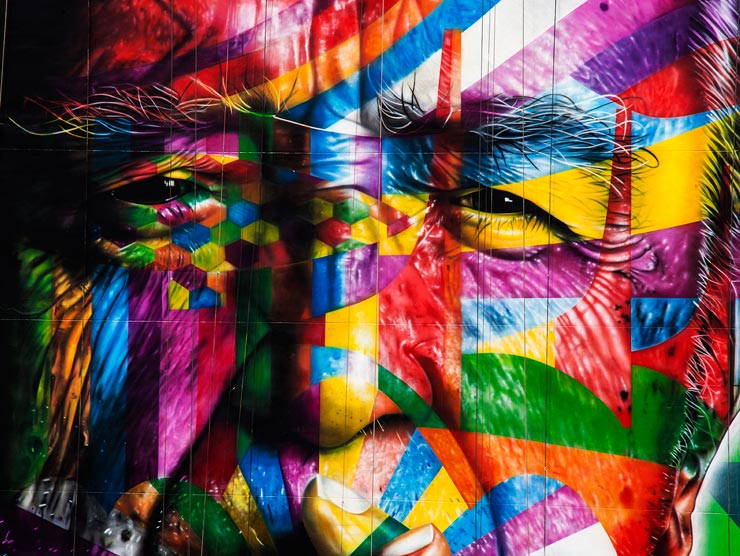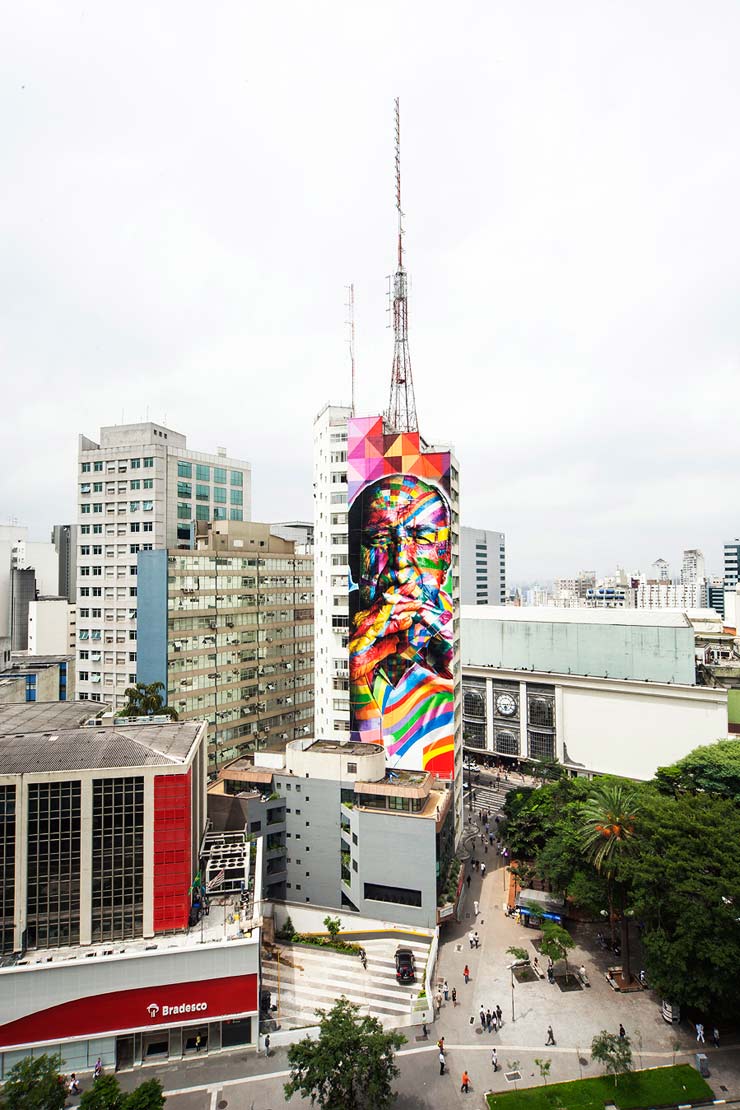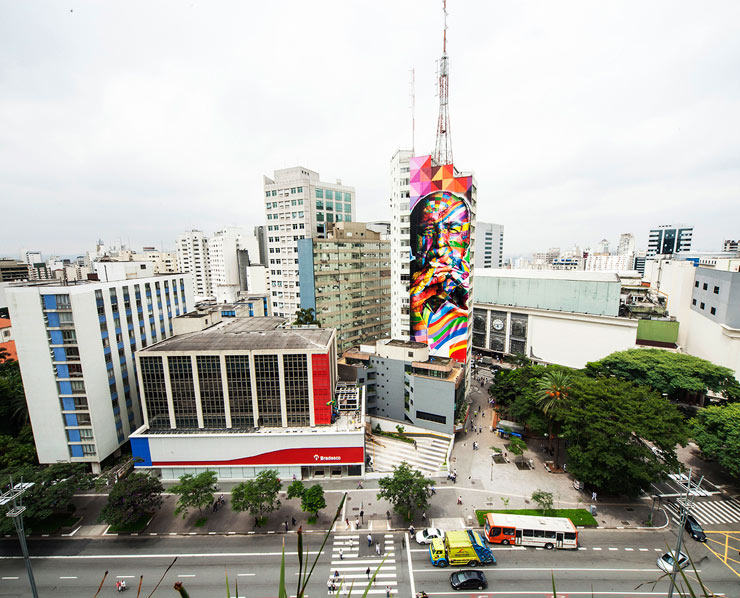Jockey Club - São Paulo only race track
The daring blue ball house in São Paulo
The blue ball house was designed and built by the Brazilian architect Eduardo Longo in 1979
Eduardo Longo lives and has his office in the house, located at Amauri St. in São Paulo
The blue ball house and its creative chimney
See the video regarding the blue ball house
2013 Trust Barometer by Edelman Significa
The 2013 Edelman Trust Barometer is the firm’s 13th annual trust and credibility survey produced by research firm Edelman Berland. This edition of the survey sampled 26,000 general population respondents with an oversample of 5,800 informed publics ages 25-64 across 26 countries. Here you will find the results focused on the Brazilian market.
The high tech scenario in São Paulo

Updated at 19:47 CET
While tech companies tend to boast nice workspace in order to attract top talent, they have an extra incentive to do so in São Paulo, where the average workday can be longer than you’d thought. As Buscapé‘s VP of Organizational Development Pompeo Scola told us while giving us a tour of the company’s offices, many employees choose to arrive early and leave late, in the hope of escaping the city’s legendary traffic jams.
As a result, several leading Brazilian startups and tech companies have come up with spaces that let workers mix work and entertainment in a relaxed atmosphere. While it would be difficult to name them all, here’s a sample list of nine offices you should check out, in alphabetical order:
Located in a tall building in Brigadeiro Faria Lima Avenue, most commonly known as just Faria Lima, the office was inaugurated in April 2012, and boasts a cosy work environment with views of the city. Its main trophy is a giant ping-pong table that the team won in a global competition between all Airbnb offices.



While the office organization may look like a regular open space, it is actually structured around “hives” of desks which make it natural for teams to work together on specific projects. The furniture itself is modular and can easily accomodate small impromptu meetings.
On the relaxing side, there are several small coffee corners on each floor, as well as a massage and therapy area. The 17th floor also features a large covered terrace where staff can play virtual games, but also ping-pong and baby-foot, or simply chill out in a hammock – we are in Brazil, after all.



All entities share the same space, which has become known for its quirkiness. For instance, the meeting room is also a gallery, and the team payed a lot of attention to interior design, handpicking furniture items and art pieces to create a quite unique work environment.



Google
While Google’s new offices on Faria Lima Avenue were only inaugurated a few weeks ago, they are already competing for a top spot among São Paulo’s coolest workplaces. As a matter of fact, the company is bringing its high standards to Brazil, while mixing them with local elements, such as hammocks.
The offices occupy a whopping 9,000 square meters, split on two and a half floors. They include a restaurant that can accommodate 200 people, as well as four micro-kitchens – in total, the company can serve up to 1,000 meals a day to its employees and guests.



Located in the Vila Olimpia neighborhood alongside several other tech companies, its two-floor space hosts 150 employees, which the company calls ‘Predictors.’ Each of them can personalize their desks, as Predicta insists they have to feel at home to boost creativity and productivity.
To limit stress to its minimum, the office also features a ‘decompressing room’ where the team can find gaming consoles, snacks, fruits and drinks – all free of charge. If they prefer to relax on their own, they can also choose to go read a book in the company’s library.



Like Google and Buscapé, it decided to equip it with hammocks, from where employees can also choose to work. In addition, Kekanto commissioned graffiti from local artists to decorate its walls, for instance in the yard where the team occasionally plays tennis. Sports aside, the team can also play games or even music – several workers belong to rock bands and can rehearse at work.



In addition to the space itself, which boasts a winter garden and several lounges, they can benefit from co-working with similar teams, or even receive coaching and seed funding from Plug N’Work founders. Around 20 small businesses are currently part of the space’s portfolio.



The offices include a large open space, several meeting rooms and an external terrace where co-workers can meet and exchange ideas. The branding is discrete, but present enough to leave no space for doubt: relax and work, you are at Pto de Contato.



The idea to rent it came from Pitzi, Printi and Emprego Ligado; due to their growth, they knew they would have move out from the offices where Baby.com.br had been welcoming them since their launch. Talking Startupi, which recently wrote an article about it, Pitzi’s CEO Daniel Hatkoff explained that the three startups will get to a combined staff of 100 over the next six months.



Image credit: Pond5 (featured); Flag; Cláudio Pepper (Google); Kekanto; Plug N’Work; Pto de Contato; Pitzi
As a result, several leading Brazilian startups and tech companies have come up with spaces that let workers mix work and entertainment in a relaxed atmosphere. While it would be difficult to name them all, here’s a sample list of nine offices you should check out, in alphabetical order:
Airbnb
Airbnb‘s office in São Paulo is one of the many regional HQs it has opened all around the world over the last few months as part of its impressive international growth, which it recently summarized through data visualization.Located in a tall building in Brigadeiro Faria Lima Avenue, most commonly known as just Faria Lima, the office was inaugurated in April 2012, and boasts a cosy work environment with views of the city. Its main trophy is a giant ping-pong table that the team won in a global competition between all Airbnb offices.



Buscapé
The main offices of Brazilian e-commerce heavyweight Buscapé are located in one of the many skyscrapers of São Paulo’s most famous avenue, Avenida Paulista, where they occupy four floors of 1,000 square meters. While the group has a total of 13 offices to host its 1,100 employees, a large number of them work from this central location, which was inaugurated in 2011.While the office organization may look like a regular open space, it is actually structured around “hives” of desks which make it natural for teams to work together on specific projects. The furniture itself is modular and can easily accomodate small impromptu meetings.
On the relaxing side, there are several small coffee corners on each floor, as well as a massage and therapy area. The 17th floor also features a large covered terrace where staff can play virtual games, but also ping-pong and baby-foot, or simply chill out in a hammock – we are in Brazil, after all.



Flag
Flag is the name of the holding that includes several ventures, including well-known digital agency CuboCC and in-house accelerator S_Kull. According to Appies’ founder Bob Wollheim, who is the new CEO of this unit, it will be a laboratory aimed at disrupting an industry that lacks innovation and out of the box thinking and business models. It will invest in internal and external ideas that deal with communications and creative strategic planning.All entities share the same space, which has become known for its quirkiness. For instance, the meeting room is also a gallery, and the team payed a lot of attention to interior design, handpicking furniture items and art pieces to create a quite unique work environment.



The offices occupy a whopping 9,000 square meters, split on two and a half floors. They include a restaurant that can accommodate 200 people, as well as four micro-kitchens – in total, the company can serve up to 1,000 meals a day to its employees and guests.



Predicta
Brazilian Web intelligence company Predicta has been operating for more than a decade, and joined Grupo RBS’ holding e.bricks Digital one year ago, but it still maintains a startup culture and work environment. While it recently expanded to San Francisco, most of its staff is based in its São Paulo offices.Located in the Vila Olimpia neighborhood alongside several other tech companies, its two-floor space hosts 150 employees, which the company calls ‘Predictors.’ Each of them can personalize their desks, as Predicta insists they have to feel at home to boost creativity and productivity.
To limit stress to its minimum, the office also features a ‘decompressing room’ where the team can find gaming consoles, snacks, fruits and drinks – all free of charge. If they prefer to relax on their own, they can also choose to go read a book in the company’s library.



Kekanto
Kekanto is a social city guide startup that has recently raised $5.5 million from VC firm W7 Brazil Capital to finance its expansion across Latin America. The company’s main force is its community of users, known as Kekanteiros, whose culture flows through its São Paulo offices.Like Google and Buscapé, it decided to equip it with hammocks, from where employees can also choose to work. In addition, Kekanto commissioned graffiti from local artists to decorate its walls, for instance in the yard where the team occasionally plays tennis. Sports aside, the team can also play games or even music – several workers belong to rock bands and can rehearse at work.



Plug N’ Work
As you may remember, Plug N’ Work is the cool co-working space that welcomed the first edition of TNW Brazil Startup Awards last year. Located in São Paulo’s Brooklin neighborhood, it rents hotdesks, office stations and private suites to entrepreneurs and startups, depending on the hourly, daily or monthly rate they are willing to pay.In addition to the space itself, which boasts a winter garden and several lounges, they can benefit from co-working with similar teams, or even receive coaching and seed funding from Plug N’Work founders. Around 20 small businesses are currently part of the space’s portfolio.



Pto de Contato
Pto de Contato was part of our selection when we listed Latin America’s best co-working spaces back in 2011. At the time, it had recently opened its second branch in São Paulo’s posh Jardins neighborhood, which is known for its fashion stores and indie film circuits.The offices include a large open space, several meeting rooms and an external terrace where co-workers can meet and exchange ideas. The branding is discrete, but present enough to leave no space for doubt: relax and work, you are at Pto de Contato.



Startup Mansion
“Startup Mansion” is the nickname of the large house that several Brazilian Internet startups have recently started to share in the Faria Lima area. Now home to nine companies, the mansion features a ping-pong table, bean bags and a large Super Mario fresco, which make for an interesting combination with its former ballroom.The idea to rent it came from Pitzi, Printi and Emprego Ligado; due to their growth, they knew they would have move out from the offices where Baby.com.br had been welcoming them since their launch. Talking Startupi, which recently wrote an article about it, Pitzi’s CEO Daniel Hatkoff explained that the three startups will get to a combined staff of 100 over the next six months.



Image credit: Pond5 (featured); Flag; Cláudio Pepper (Google); Kekanto; Plug N’Work; Pto de Contato; Pitzi
A remarkable tribute to Oscar Niemeyer by Kobra
When we cross Paulista Avenue at the financial district of São Paulo, we feel astonished with the fabulous work of art made by Kobra, a well-known Brazilian mural artist. I can not say better than Jaime Rojo and Steven Harrigton mentioned for the Huffington Post website, with photos of Alan Teixeira.
"Kobra Pays Honor to Architect Niemeyer in São Paulo
Posted: 02/18/2013 8:57 am
Brazilian Street Artist Eduardo Kobra and four other painters have been working six hours a day since January 14th to complete a 52 meter high mural that honors architect Oscar Niemeyer who passed away in December just days before his 105th birthday. Covering the entire side of a skyscraper on Paulista Avenue in São Paulo's financial district, the artwork is inspired by Niemeyer's architecture, his love of concrete and Le Corbusier.
If you look closely among the colorful forms that overlay the photo-realistic portrait, you'll find that some of them are based on Niemeyer's works. In this case, art on the street could not find a more fitting tributary than a modern architect who espoused populist sentiments that his field should serve everyone, not just the privileged few.

Eduardo Kobra. Installation in progress. São Paulo, Brazil. (photo © Alan Teixeira)

Eduardo Kobra. Detail. São Paulo, Brazil. (photo © Alan Teixeira)
"Oscar Niemeyer was an important figure to us," explains Kobra during a break from painting, as he talks about the Rio born citizen of the world and Brazil's modernist icon, "The decision to paint this here reminds us of the importance of the several works he did in the city. Given their relevance even today, I think he deserved this great space on Paulista Avenue."
The logistics and costs of this labor of love have been as great at the mural is high. Beginning in the early autumn, the process included getting permission from the building and city hall, placing the scaffolds, agreeing on and setting the design, and buying the paint. "In the end, the paperwork was the most difficult part and I wanted to get it all resolved so I could paint the mural," explains the artist.
"Furthermore it was a very expensive project. The staff of the building gave us the paint, the André Art Gallery helped us with the equipment, there was a hotel near the building that hosted us and we also got a restaurant to help us with food. This project relied upon genuine cultural support and it could only happen because of it," says Kobra. "For this project we didn't receive a penny of compensation -- we are doing it for the pleasure of doing a job here at Paulista, the most important avenue in São Paulo."
Eduardo Kobra. Detail. São Paulo, Brazil. (photo © Alan Teixeira)

Eduardo Kobra. Detail. São Paulo, Brazil. (photo © Alan Teixeira)
Eduardo Kobra. Detail. São Paulo, Brazil. (photo © Alan Teixeira)"
The Benedictine Monastery
Located in the old downtown of São Paulo, the Benedictine Monastery is one of the treasures of the city.
Aerial view of the Benedictine complex, projected by the German architect Richard Bernl and built between 1910 and 1912
The facade of the church
The clock from Germany, considered for decades, the most accurate in the city.
The entrance of the traditional School of Saint Benedictine and the Theology University
Pope Benedictine XVI stayed at the monastery when he visited Brazil in 2007. From the balcony, where we see a sunblind, he blessed the catholic crowd who came to see him.
Subscribe to:
Comments (Atom)














São Paulo may not be the most beautiful city in the world, but its vibrant tech scene boasts world-class offices when it comes to cool and functional interior design.